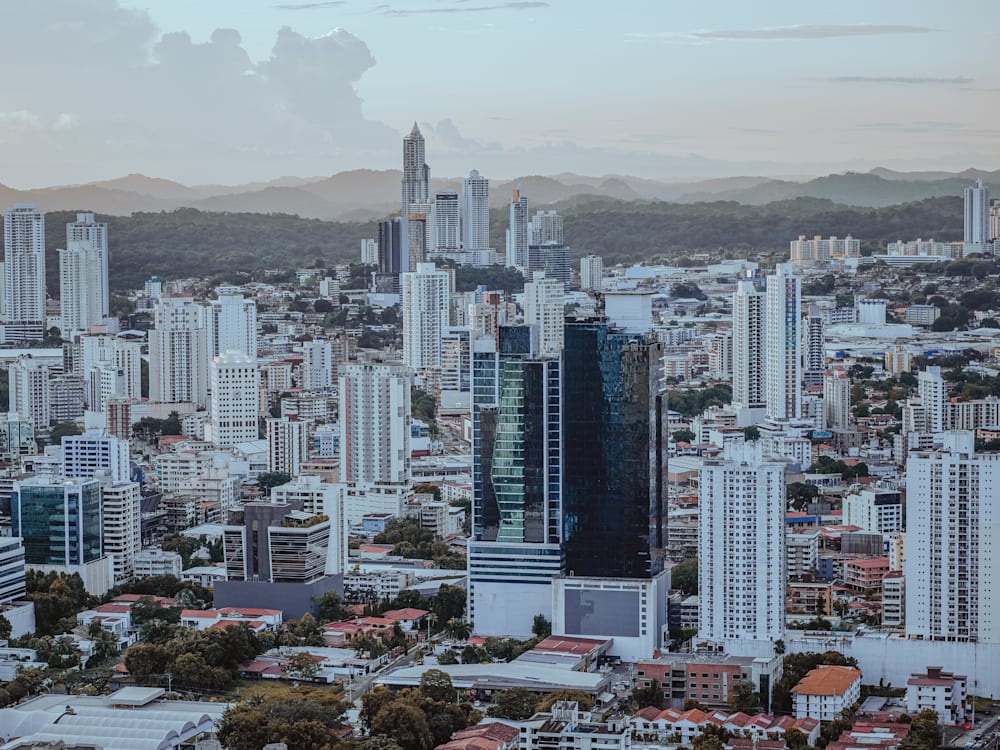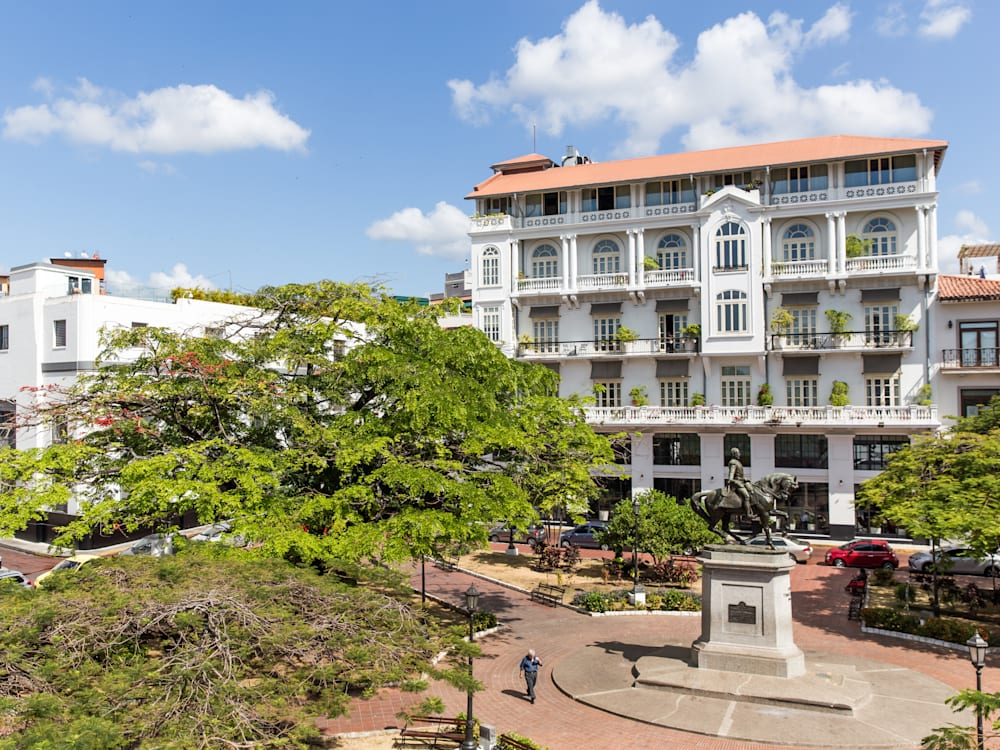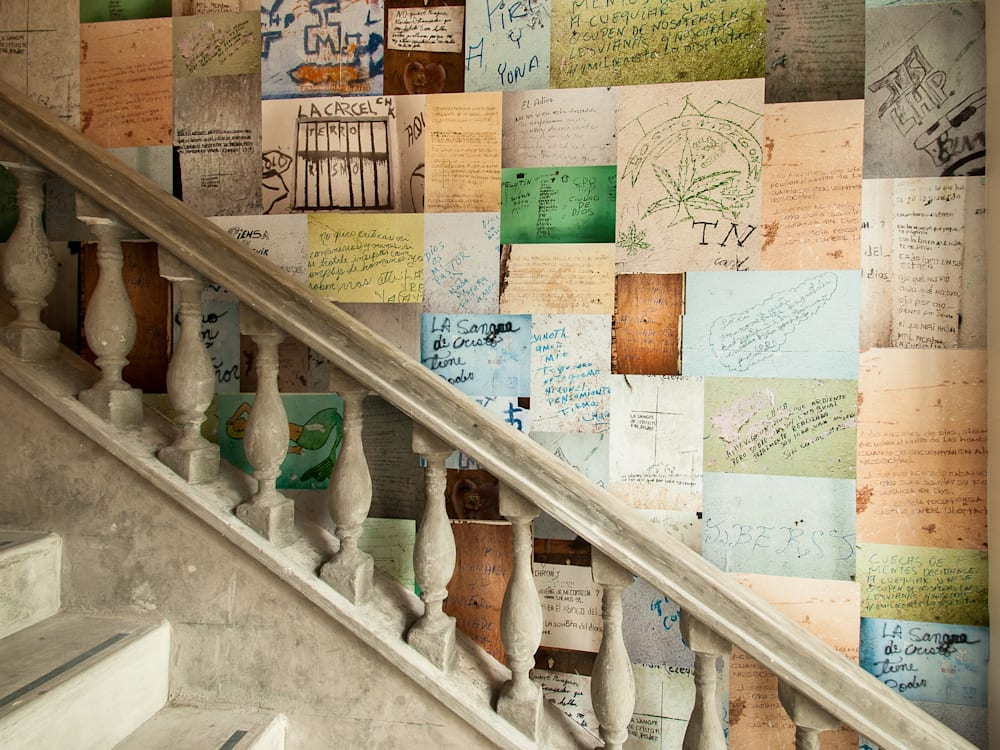The Spanish word for return is volver. The pronunciation is that the ‘v’ sounds like a ‘b’. Soft. Almost like a murmur. In the first person, we say yo vuelvo meaning ‘I return’. As I crossed La Fronterra on a rickety bus from Costa Rica into Panama, I played this soundbite over and over in my head: ‘yo vuelvo.’
10 years later, I had finally honoured the promise I made to myself when I left this country: Yo volveré.
PANAMA CITY: 2019

In the last days of December 2019, I was on the road again. Sola. Alone. I felt exhilarated and dreamy.
I began to speculate about the imminent reunion with the country I had left 10 years ago. It did feel like I was about to meet a dear but distant lover after a very long time. A decade on, what would have changed for us both? Would Panama and I still click? Would there still be chemistry and synergy despite the years, the development, the fact that she had become much more popular than when we last met?
I jump off the bus at sunset, and after a short cab ride it’s night already and I finally arrive at the house where I’ll be staying. My friend’s place is in an area called El Diablo, an area of the city where elegant houses nestle between palms, a breeze comes in off the canal, and you’ll even catch toucans and parrots going about their business if you’re lucky.
In this area, there’s an old fashioned railway that runs the freight trains down by the canal and splits the city down to the sea. The horn that sounds from these hulking goods trains is certainly from another era, making the whole scene feel like you’re in an early Western movie.
I’m greeted by an old friend and colleague who knew me during my past life in Panama. She hasn’t changed. The place looks the same as when I left 10 years ago. The children of the family have grown taller, now they’re young adults with lives and dreams and travel plans of their own.
Later that night I catch up with an old friend, Marco, for a beer in the old town – Casco Viejo – where I lived as a student. We meet in the Plaza Francia and walk down Las Bovedas, the floral arches by the sea that always reminded me of the set of a Shakespeare play. Times have changed and so have tastes, habits and persuasions, but some things remain. We still like the same kind of local places.
We select an old school Panamanian spot: plastic tables outside, beer in bottles, salsa playing nice and loud.
‘So much has changed Eva,’ says Marco, as he takes a swig from his Balboa beer (the brand is the same, the price has increased exponentially). Marco pronounces my name the Hispanic way: the v is harder, to me it sounds much more serious, very grown up.
I think by now I’ve just about grown into ‘Eva’ pronounced the Spanish way. Marco and I swig our cold beers and look around. The place is unrecognisable from when we knew each other here a decade ago. It is cleaner. Safer. Busier. There’s a briskness and a buzz in the air that wasn’t here before. The barrio looks and smells like progress.
PANAMA CITY: 2009

Flashback 10 years prior and two blocks over – Plaza Herrera – the square in which the elegant American Trade Hotel now stands, was the bullseye centre of our nocturnal world in Casco. Herrera was HQ. Ground zero for underground nightlife. Always the meeting point. Always a true melting pot.
My memories of this very unique time and place are of perpetual street life and almost continual dancing. Usually outside. In the road, on roof terraces, in the squares. I did a lot of normal stuff like go to work, write my thesis, go shopping, cook food, but somehow the whole experience seems to be marked by the dances. Everything else is just space in between.
In those days, Plaza Herrera was made up of multiple crumbling and mostly abandoned colonial buildings, some of which had been occupied by gangs and/or artists, then subsequently transformed into squatted nightclubs and informal music venues.
We lived encased in this warm, dynamic, drum-beating, history-steeped crumbling scene that contained our whole world. This small piece of land held all the places we ate at, the markets we shopped at, the bars we drank at, the parties we attended. The homes shared, the moments in living rooms and on roof terraces and balconies, the long talks in hotel pools, the friendships and romances. The map of this unique and compact barrio has always been filled with quirks, stars, crosses and even a few ‘Zones Rojas’ (red zones/no-go areas). But that’s a story for another day.
In Cacsco we were an eclectic community. People from all over the world lived in my apartment block. Every one of my neighbours had an equally eccentric rhyme or a reason for being there. We were an unconventional urban family of artists. We didn’t want that Americanised atmosphere of uptown. Frankly my dear, we couldn’t afford it. We wanted the real thing. We weren’t phased by the danger. I guess that’s what they call ‘the fearlessness of youth’.
Our social circle contained all types of artists and artisans – lots of circus performers and dancers from all over Latin America. I remember a couple from Argentina who would tango-dance elegant rings around the nervous looking patrons that started to appear on the cobbled patios of the first fancy restaurants tentatively opening their doors in an area notorious for gang violence.
Behind all this, at Casco’s very edge is the water: the silver-blue backdrop of the Pacific Ocean, where the skyscrapers and the other world of uptown exist in a parallel universe across the bay. Down by ‘Las Bovedas’, you can sit on the sea wall and witness the whole city in a perfect light. It’s a great place to watch the sun come up after dancing all night.
TIMELESS LESSONS

Inevitably, what was an artist’s haven and bastion of underground nightlife in 2009 had evolved into an entirely different beast by 2019. Today, Casco Viejo is now one of the chicest neighbourhood in the city and is full of wealthy Americans, expats, remote workers and digital nomads.
The squares are no longer full of artists, musicians, Rastafarians and backpackers. They are now packed with people who look like they’re making six figures. I pause to think about all the families who have been relocated in order to facilitate this postcard-perfect version of Panama City. I feel the sting, but also remind myself that change and development is inevitable, for people as well as places.
Perhaps a testament to the kind of enduring love that we aspire to is the aptitude, and indeed the want, to love through different seasons, different incarnations: through cycles of prosperity and of lack, of boom and bust. To see how much a place can transform in a decade has made me reflect on my own growth within that time period. Panama held up a mirror to me in this way.
In my experience, real change tends to come from a grassroots level, and often isn’t so loud in proclaiming its virtues or shouting about its progress. With that in mind, I’m glad Panama is becoming more visible on the global stage, and that more people can discover her beauty as a result.
As I left on a plane in the first days of 2020, I made another silent but reverent promise to myself: ‘Yo continuaré volver‘. I will continue to return. To see more clearly all the ways in which you continue to grow.
Find out more about the American Trade Hotel, our first in Panama City
Eva Marie Baker is a writer and creative producer who has worked and travelled extensively in Latin America and the Caribbean. She is passionate about music, dance and urban culture, and fuelled by a desire to tell the stories of people and places that might typically be overlooked, undervalued or misrepresented.



